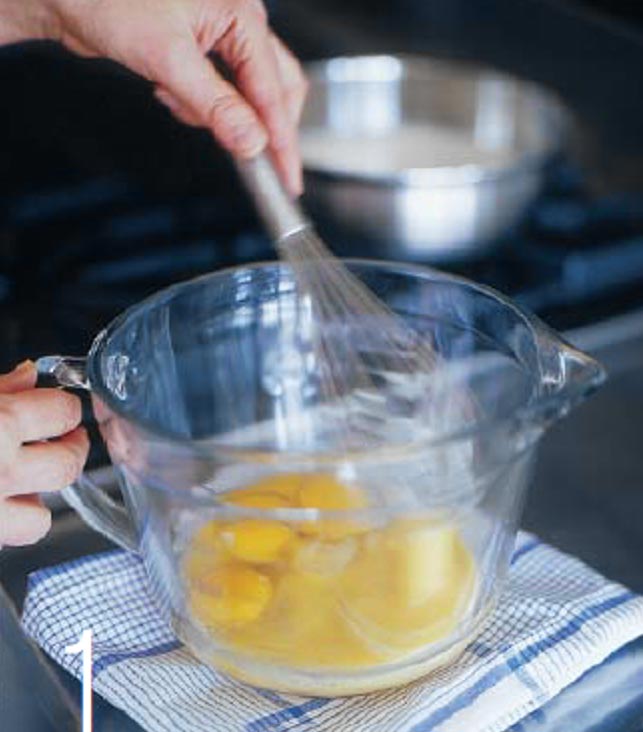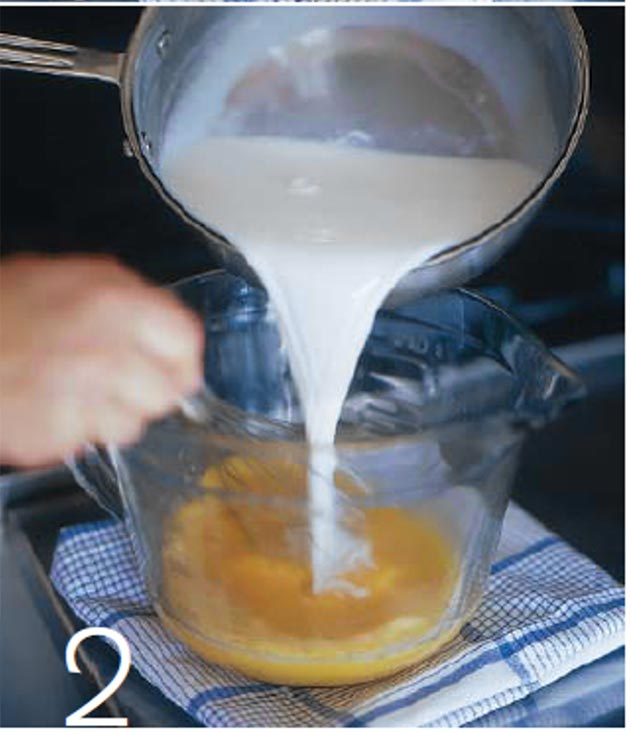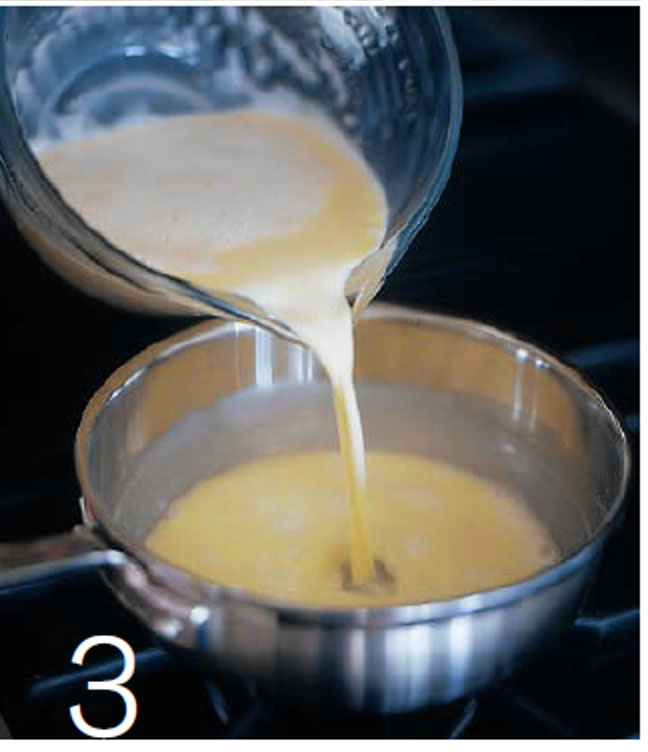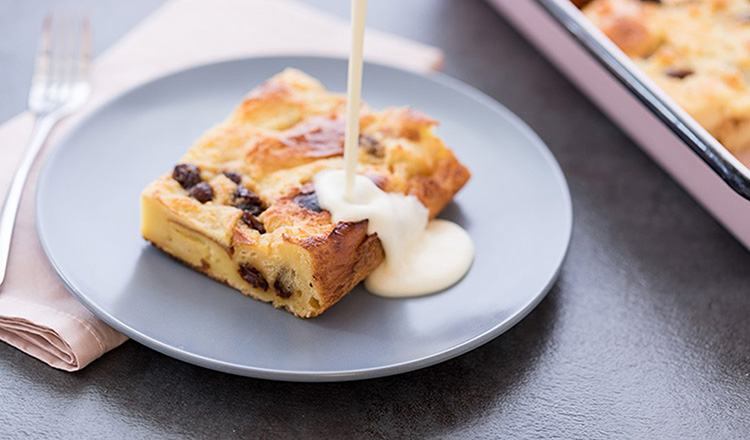Tempering is a technique that allows you to add eggs to a hot liquid without scrambling them. We see tempering in recipes for crème brûlée, vanilla sauce, pastry cream, and some savory cooked egg dishes.
The technique itself is simple but fast-moving, and it requires some preparation before beginning to ensure you're ready for each step as it comes. As always, mise en place is the key to success! Be sure to review your recipe to determine how many bowls you may need, as well as any tools, like whisks, wooden spoons, or towels for safely handling hot pots.



- Whisk the eggs until they are a uniform golden color. This action breaks up the yolk so that it will blend with hot cream or milk more readily and not overcook upon contact. Adding some sugar also helps to prevent the eggs from overcooking.
- The first addition of hot liquid to eggs should be no more than half the volume of the egg mixture. Pour or ladle the liquid into the eggs while stirring the mixture until it is smooth. This mixture is called a liaison. Once the eggs are slightly warmed in this way, you can add hot liquid in increasingly large increments. Continue until you have added about one-third of the total volume.
- The tempered mixture is now hot enough to combine with the remaining base liquid without instantly cooking the eggs into little curds. For a baked custard, add the remainder of the hot milk or cream to the tempered eggs, stirring constantly, before pouring the mixture into a prepared mold or crust. To make a stirred custard or pudding, pour the heated liaison back into the pan that holds the remaining two-thirds of the simmering liquid. Return it to low heat, or simply continue to simmer until the liaison has lightly thickened the base, usually at around 180°F.
If things go wrong, as they sometimes do, you may be able to save your custard.
If your custard is very curdled, meaning it looks more like scrambled eggs than a smooth sauce or creamy pudding, you'll likely have to start over (sorry for the bad news!). But if your finished product is mostly perfect with the stray eggy bit, you can strain it before using. For a thin stirred custard, like vanilla sauce, pass the custard through a fine mesh strainer. For a thick custard, like a pudding or pastry cream, squeeze the custard through cheese cloth.
If you won't be using your cooked custard right away, cool it in a heat-safe bowl over an ice water bath, making sure to stir frequently. For thick custards, you can spread them on a baking sheet to cool quickly.


